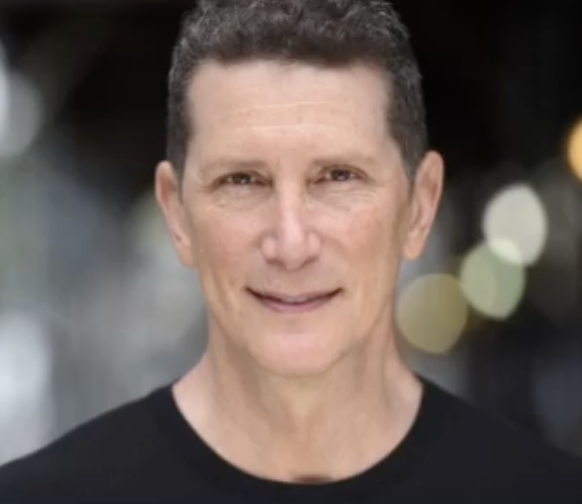The Dancers of the Met, Bringing the Arts to a Pandemic World
For the Dancers of the Metropolitan Opera, community is paramount. Dancing is an inherently intimate artform: dancers rarely dance alone, and friendships, colleagues, and artistic bonds of trust are formed on the stage, through in-person rehearsals, performances, and studio classes, the latter of which were often held at the Met four times a week during the season.
All that was taken away when the Met canceled the remainder of the 2019-2020 season due to the COVID pandemic. With lockdown restrictions keeping these normally active artists at home, dancers like Maria Phegan and Liz Yilmaz soon started to feel the lack of opportunities to hone their skills and work with their colleagues. Almost immediately, Liz began scheduling Zoom classes, three times a week, to keep the Met dancer community sane and connected. This went on for six months, until the Zoom classes morphed into Zoom meetings to brainstorm how to continue performing during a time when congregating in public places, even in small groups, was taboo. From these meetings, Dancers of the Met was born.
At least seven live performances were choreographed, staged, and produced by the Met dancers, as well as a number of performances made for live streaming and video (like this one). Their first live performance was via Arts on Site, in March of 2021. Produced by Mara Driscoll and Liz Yilmaz, the group presented five new works (the culmination of a week-long residency for the choreographers to create and rehearse), accompanied by a string quartet of Met Orchestra musicians, a Met pianist, and Seth Malkin and Anne Nonnemacher, both members of the Met Opera Chorus. Still in the thick of the pandemic restrictions, each of the four performances had an audience of only sixteen, all masked and socially distanced.
Almost every month following, the dancers would present a performance in a different area of town. Two were at the High Line Nine. One was in Hoboken. One performance was outside, on 75th Street, as part of the city’s Open Culture/Open Air Opera initiative. Over 50 individuals either performed or volunteered their time to produce this event (including members of the Met’s stage management team), and other than getting haggled a bit by a few locals (mainly noise complaints), the performance was a resounding success. Maria saw that the audience members, both those who were ticketed observers and those passing by on 75th street, were moved by the presence of live art during the pandemic. “They needed music for healing, they needed dance, they needed movement.”
Anne Nonnemacher, Met Chorus Soprano.
Met Chorus soprano Anne Nonnemacher danced all through childhood, and still takes lessons to this day, so the experience of collaborating with the Dancers of the Met was a joyful and fulfilling experience. Michelle Vargo’s choreography to Handel’s beautiful aria Lascia Ch’io Pianga (sung by Anne, of course) was performed at multiple venues, and Anne was pleased to work not just with the dancers but also the Met Orchestra musicians who played in the string quartet. “[The chorus] doesn’t often get the chance to work with the orchestra musicians during the season, so the opportunity to work with them and get to know them was really lovely.” She was also offered a moment of personal creativity, fashioning a solo, a-cappella fragment from the Flower Maidens scene in Wagner’s Parsifal, which preceded another work choreographed by Vargo (with costumes designed by another Met dancer, Sam Meredith). Jacoby Pruitt’s choreography to Marietta’s Tanzlied (from Korngold’s Die Tote Stadt) included Anne, not just as a singer, but as a focal point in the action, which made good use of her movement background.
Seth Malkin, Met Chorus Bass.
For Met chorus bass Seth Malkin, performing with the Dancers of the Met and the orchestra musicians of the Met was an opportunity to “get together and collaborate, at a time when doing so felt like my only tether to my artist-self.” Seth, along with Met chorus soprano Anne Nonnemacher, performed art songs at the very first Arts on Site concert in March of 2021, and Seth recently offered up a set of art songs, with beautiful interpretive dance by Antuan Byers, at the High Line Nine. But it was May 16, 2021 that sticks out in his mind the most. The Dancers had scheduled their Open Air Opera event on 75th street that morning, the same day as the Met’s special performance at the Knockdown Center in Queens. He was scheduled to be one of the first artists to perform that day, and was able to sing an aria from Beethoven’s Fidelio, as well as connect with the assembled onlookers by answering questions about what it’s like to sing at the Met. Afterwards, he rushed to Queens to rehearse and perform in the Met’s special event. “Two gigs in one day went a long way to making me feel like I was exiting the very long, very dark tunnel I had been traveling, since the Met sent us home the year before.”
Audience sizes varied, as one might imagine due to the strict COVID protocols that were in place during the height of the pandemic. Curator/director Maria Phegan gathered 11 artists together for their first livestream event presented by Arts ON AIR, with three pieces by choreographer Michelle Vargo, along with Met Orchestra Musicians and additional collaborators, in an intimate rooftop setting as a love letter to NYC. This performance had room for 10 paid, ticketed observers. However, their May 2021 outdoor concert, which was part of Open Culture/Open Air Opera, was not only a ticketed event, but also drew in crowds of onlookers and passers-by who happened to walk down 75th Street during their performance. Maria did note that the true reach of their performances couldn’t be exactly quantified, as their use of live streaming via Instagram meant that they were able to reach an expanded audience of non-locals.
Not only were the Dancers of the Met creating original choreography and performing these works for grateful audiences: they were also producers, grant writers (Maria Phegan is something of an expert at this, at this point in the game), web developers (Liz Yilmaz manages the Dancers website), and videographers (Cesar Abreu handled the video work for performances in May and August). Organizations donated tents and flooring. But thanks to a combination of generous donations, fundraising, proceeds from tickets and merchandise sales, and grants from the New York Foundation for the Arts and the NYC Department of Cultural Affairs, the Dancers of the Met that participated in these concerts received stipends for their work, during a time where jobs in the performing arts industry were sparse, at best. And the content they created in 2020 led to a fiscal sponsorship by Fractured Atlas, which allows the Dancers of the Met to function as a 501(c)(3) and accept donations for future performances and community engagement.
All in all, these performances were immensely beneficial to both the dancers and their audiences. “The Met, the Met community got closer during this process,” said Liz Yilmaz of the experience. Maria agreed that all this, initially, “was for the dance community, but it ended up that people need this, the world needs this. They needed it as much as we needed it.”
In the coming months, the Met dancers have a lot of work ahead of them. At the Met, they’ll be rehearsing and performing The Magic Flute, Turandot, Die Meistersinger von Nurnberg, Porgy and Bess, and Cinderella. But there are so many more behind-the-scenes projects they have to look forward to. With Maria, Liz, Natalian, and Michelle Vargo at the helm, the Dancers of the Met will be brainstorming fundraising ideas, holiday events, and focusing on 2022 festivals and summer programs, all the while laying the groundwork for a sustainable, supportive, abundantly artistic future.
Check out the Dancers of the Met if you’d like to learn more about these incredible artists. Dancers of the Met is a fiscally sponsored project of Fractured Atlas, a registered 501(c)(3) charity. All monetary donations are tax deductible.





